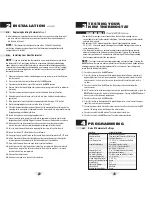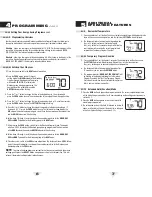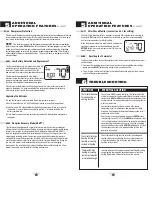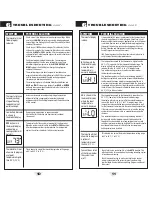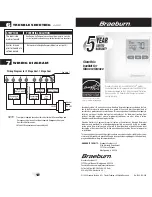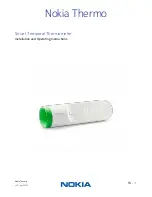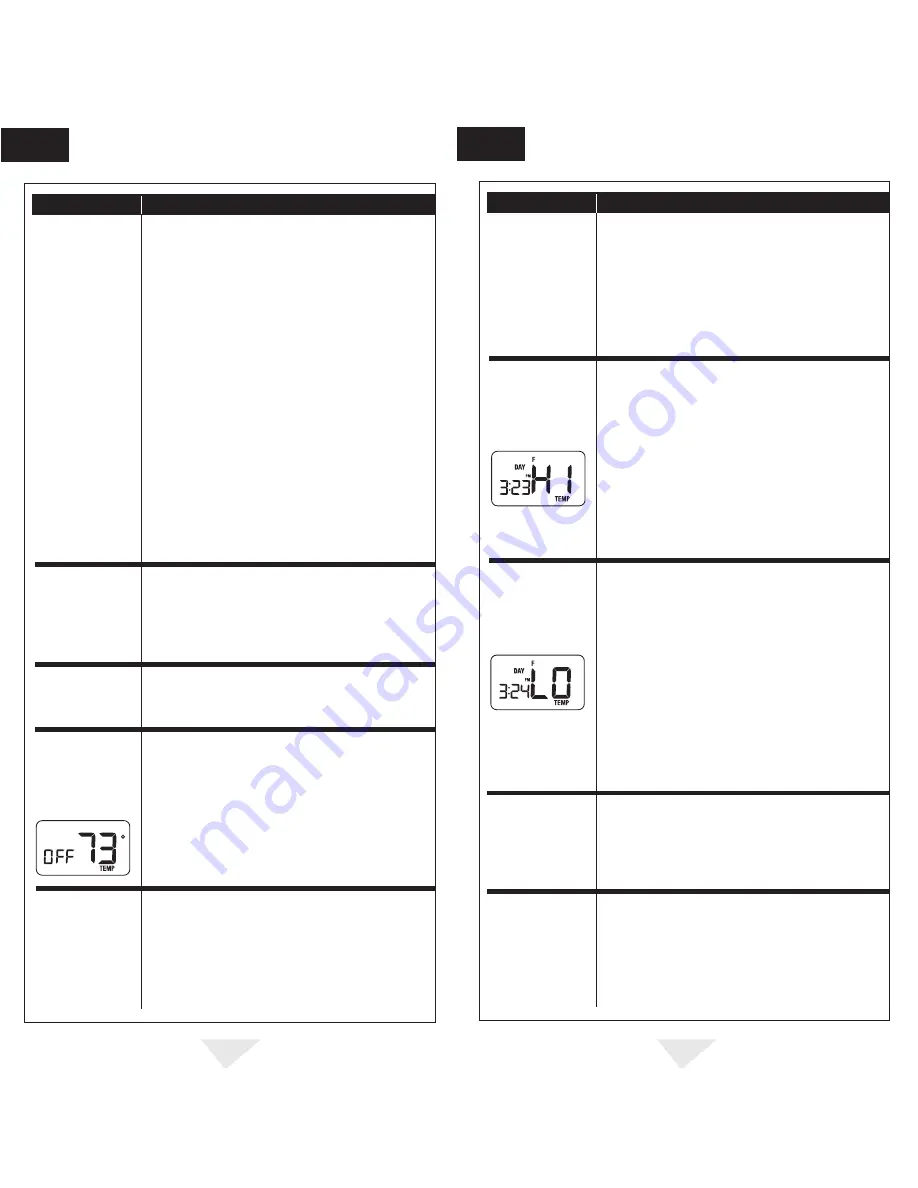
10
11
TROUBLESHOOTING
6
cont.
SYMPTOM
POTENTIAL SOLUTION
Verify your program setpoint time entries. The heating and
cooling programs utilize the same setpoint times, but have
individual setpoint temperatures for the
MORN, DAY, EVE
and
NIGHT
setpoints. See
Setting Your Energy Saving Program
section of this manual.
Thermostat program has been temporarily overridden and
program indicator is flashing in the display. Wait till next setpoint
and the temporary override will expire or change setpoint
temperature to desired comfort level.
Thermostat program is in Extended Hold (Vacation) Mode and
HOLD
and
TEMP
is showing in display. Press
HOLD
or
RETURN
button to release permanent hold and return the thermostat to
normal program operation.
Thermostat turns on
second (auxiliary)
stage of heating
too quickly or not
quickly
enough.
Increase or decrease second (auxiliary) stage temperature
differential setting as appropriate to provide the desired
performance level. See
Setting Temperature Differential
section
of this manual.
Thermostat will not
follow program
setpoints.
Check current time of day, day of week program settings. Make
sure to verify
AM/PM
indicator is accurately displaying desired
time settings. See
Setting Current Time of Day and Day of Week
section of this manual.
Check to see if
OFF
is shown in display. This indicates that the
system is turned off at the thermostat. Move the system selector
switch to the
HEAT
or
COOL
position. After the compressor short
cycle protection 5-minute period expires the system should start
within several seconds.
Low battery indicator
is shown in
thermostat display.
Replace back-up batteries as soon as possible.
See
Low Battery Detection and Replacement
section of
this manual.
OFF
is shown in
thermostat display
and heating or
cooling system will
not start.
This indicates that the system is turned off at the thermostat.
Move the system selector switch to the
HEAT
or
COOL
position.
After the compressor short cycle protection 5-minute period
expires the system should start within several seconds.
Thermostat display
is blank.
It is possible that AC power is not present at the thermostat and
the back-up batteries are fully discharged. Check fuse, circuit
breaker and thermostat wiring as appropriate to verify AC power
is available. Replace back-up batteries before reprogramming
thermostat to make sure you have back-up power. See
Low
Battery Detection and Replacement
and
Setting Your Energy
Saving Program
sections of this manual.
If AC Power is present, call a professional service technician to
verify thermostat and system performance.
Thermostat will not
allow me to program
a setpoint
temperature higher
than 90˚ F (32˚ C).
This is above the normal thermostat temperature setting range
of 45˚ to 90˚ F (7˚ to 32˚ C).
Thermostat will not
allow me to program
a set point
temperature lower
than 45˚ F (7˚ C).
This is below the normal thermostat temperature setting range
of 45˚ to 90˚ F (7˚ to 32˚ C).
Fan continues to run
all the time whether
the system is on
or off.
Check that the fan control switch is in the
AUTO
position. This
will allow the fan to run only when the heating or cooling system
is turned on and running.
Check thermostat wiring to make sure that the fan control
wiring is connected to the correct terminals on the wiring
terminal block. See
Installation
and
Wiring Diagram
sections of
this manual.
LO
is shown in the
thermostat display
where the room
temperature is
normally displayed.
HI
is shown in the
thermostat display
where the room
temperature is
normally displayed.
The temperature sensed by the thermostat is higher than the
99˚ F (37˚ C) upper limit of the thermostats display range. The
display will return to normal after the sensed temperature
lowers within the 40˚ to 99˚ F (5˚ to 37˚ C) display range.
Turn on the cooling system or use other methods to lower
the temperature accordingly.
This condition could occur from the system being turned off
during an exceptionally warm period or upon installation when
the thermostat has been stored for a long period of time in a
warm vehicle or location prior to being installed. The thermostat
is equipped with a mechanical high temperature safety switch
that will turn off the thermostat should the temperature exceed
99˚ F (37˚ C) in the heat mode.
TROUBLESHOOTING
6
cont.
SYMPTOM
POTENTIAL SOLUTION
The temperature sensed by the thermostat is lower than the
40˚ F (5˚ C) lower limit of the thermostats display range.
The display will return to normal after the sensed temperature
rises within the 40˚ to 99˚ F (5˚ to 37˚ C) display range. If the
temperature in the controlled space seems to be normal, wait
for the thermostat to acclimate to the correct room temperature.
If the room seems to be colder than usual, turn on the heating
system to raise the temperature as needed for comfort within
the room.
This condition could occur from the system being turned off
during a cold weather period or upon installation when the
thermostat has been stored for a long period of time in a cold
vehicle or location prior to being installed. The thermostat should
be allowed to warm up prior to installation to allow proper
heating control once installed.


